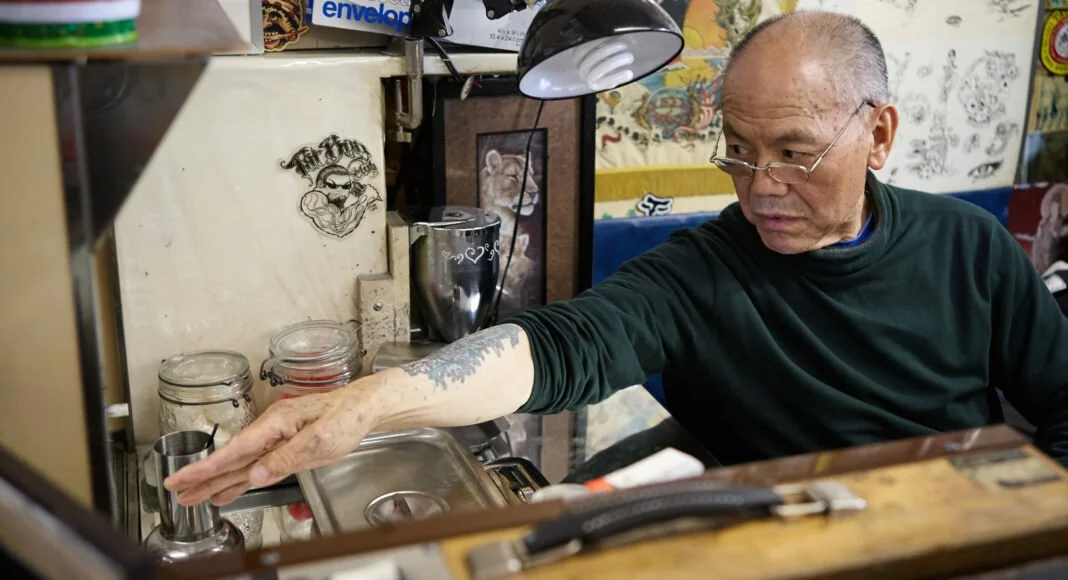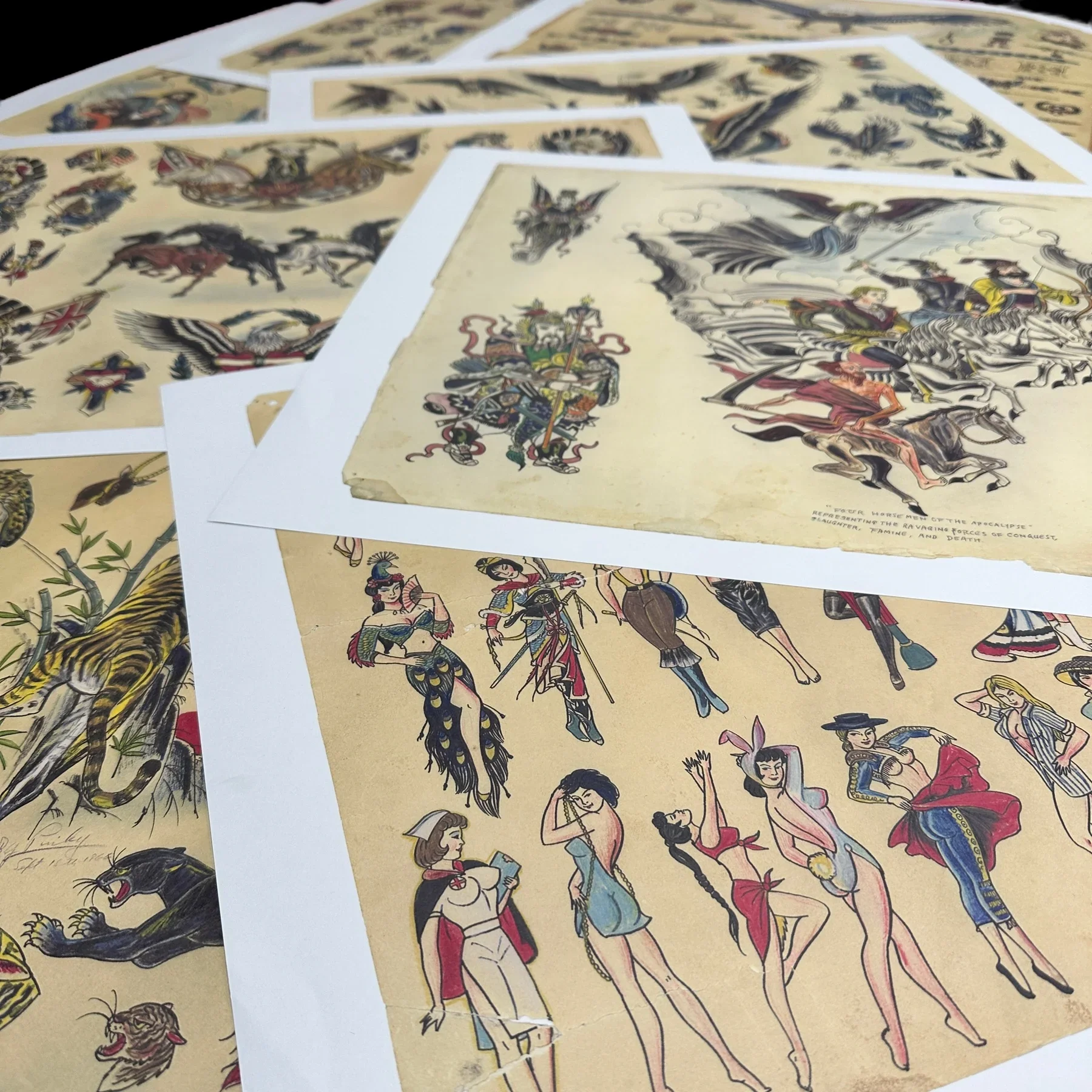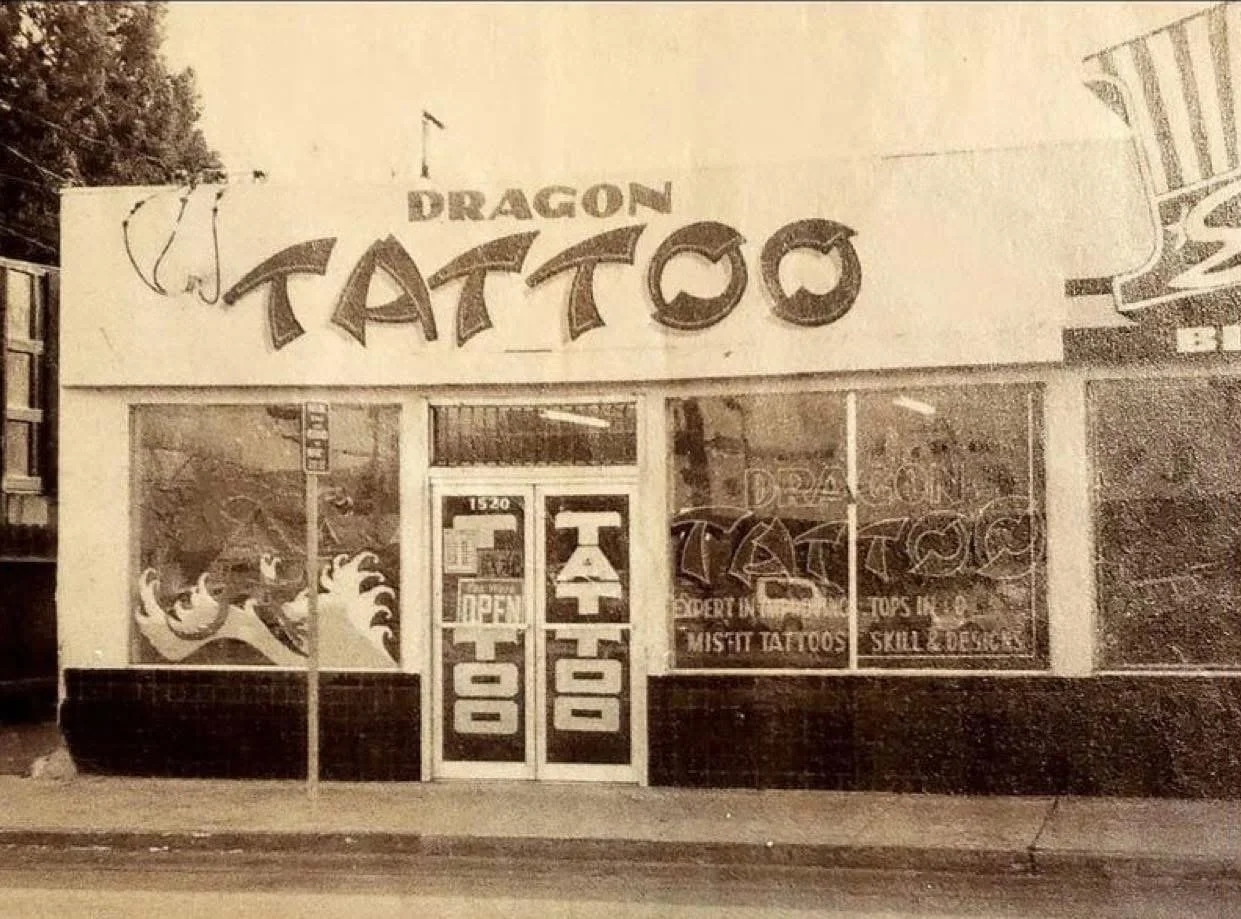Rose tattoo Artist Spotlight: Pinky Yun
The San Jose Legend; Pinky Yun
Pinky Yun’s career spans over six decades, crossing continents and cultural boundaries. His work not only influenced countless tattoo artists and studios in the U.S. and Asia, but also bridged distinct styles—traditional East Asian mythic imagery with the bold iconography of Western sailor-flash. For anyone interested in the evolution of tattooing—especially the Asian-influenced styles in the West—Pinky Yun remains a pivotal figure.
Pinky’s work helped connect East Asian tattoo traditions (Hong Kong, Taiwan, Japan) with the Western world (especially U.S. and the Bay Area), thereby shaping what we now think of as “Asian-influenced” tattooing in America.
Early life & beginnings
Pinky Yun was born Yun Bing Kwan (also seen as Bing Kuan) on October 29, 1927, in Canton (Guangzhou), China (some sources list Shanghai). He began tattooing at a relatively young age—some say as early as age 10 according to some, though more solid sources say age 16-17 when he learned tattooing.
With the change of political climate in China after 1949, Pinky relocated to Hong Kong, where he continued his craft working in sailor-town districts and building a reputation. Over the next decades he opened shops and tattooed in multiple East Asian such as: Kowloon (Hong Kong), Macao, Taiwan, and tattooed in Japan during the Korean War era.
Career throughout Hong Kong & early style
During his time in Hong Kong and the broader region, Pinky developed what would become his signature: large freer-hand compositions featuring mythic creatures (dragons, tigers, panthers) and strong Asian-inspired iconography, but executed with the boldness of Western sailor-tattoo tradition.
“Artists in other seaport cities would copy his graceful drawings from the arms of passing sailors.”
He worked a shop in Wan Chai (Hong Kong’s iconic “sailortown” district) where servicemen and merchant seamen congregated. In this environment he honed his reputation for being quick, bold, and able to draw free-hand, often without pre-made stencils, using simple tools such as a tooth pick dipped in ink to freehand an entire dragon sleeve outline. Overtime, his designs became walk-in flash for sailors, travelers and tattoo-enthusiasts alike.
Migration to the United States & the San Jose era
In 1972, Pinky moved to the United States. He opened a shop in Alameda, California, and then in 1981 moved to San Jose, establishing his long-running studio, Dragon Tattoo at 1520 W San Carlos Street.
From 1981 until his retirement in the fall of 2009, he worked at Dragon Tattoo, which became a landmark in the Bay Area tattoo scene. The studio’s walls and binders were reportedly covered in thousands of client photo-archives and flash designs, many by Pinky himself. One longtime Bay Area tattooist said:
“Maybe the first five years of my career was a lot of either finishing Pinky tattoos, tattooing next to existing Pinky tattoos, or putting background around a Pinky tattoo.”
Many of Pinky Yun’s pieces covered full backs, arms, legs with dramatic creatures in motion and strong silhouette.
Known best for drawing directly on the skin and sometimes tattooing with both hands—or switching hands depending on angle. His ambidexterity became part-legend.
Style, artists’ impact & legacy
By the time he moved to the United States, Yun had an established relationship with another tattoo legend, Norman “Sailor Jerry” Collins in Honolulu, Hawaii. While the two never met in person, they consistently exchanged designs, tips and techniques.
Many of Norman Collins’ designs have become cemented in tattoo history, but perhaps none as much as the classic pinup girl. However, according to Ed Hardy, a protege of Collins, “most of Jerry’s signature pinups from the beginning of the sixties were slightly transformed Pinky originals.”
Yun’s most famous pinup design is commonly referred to as “Suzie Wong.” In the 2009 interview, he told Sate of Grace owner and tattooer Tami Kitamura he had based the design from a photo taken in the Neptune Bar below his shop, of the actress Nancy Kwan, lead in the 1960 film The World of Suzie Wong.
While Yun’s artistic influence undoubtedly has a global reach, for him, tattooing was more like a family affair. Taki Kitamura writes of Yun’s wife, who helped run the logistics of the Dragon Tattoo, collecting money from clients and often bandaging them up after their appointments. Many aspiring artists wanted to learn the craft from Yun. He never took on any apprentices outside of his family.
Mentorship, family & shop culture
Although he never broadly accepted many external apprentices, Pinky worked with his family and close-inner circle. His wife handled much of the studio logistics, client relations and bandaging. Several of his nephews and children later opened their own shops in the Bay Area, continuing his lineage.
Dragon Tattoo was more than just a commercial shop—it functioned as both client studio and archive. Binders full of client-photos of tattoos done by Pinky served as visual history for others seeking to apprentice or study his work.
His mentor-peer relationship with artists like Don Ed Hardy is often cited: Hardy featured Pinky’s work and considered him a major influence.
Later years, retirement & death
Pinky formally retired in the fall of 2009, closing his San Jose studio after nearly three decades at that location. He passed away on December 2, 2010, at age 83. His passing was mourned in tattoo-circles worldwide, but his stories, artwork, and legacy lives on.



